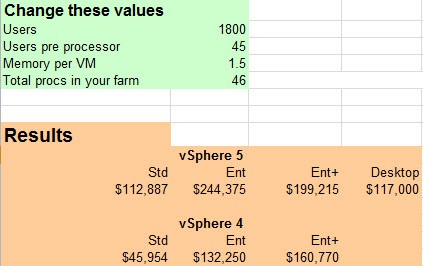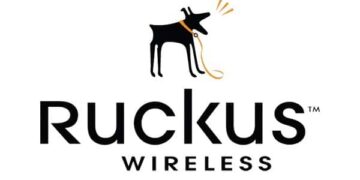Among the various license changes in vSphere 5.0, the way you can license VDI (virtual desktop infrastructure) has also changed, or rather, now gives you more options. Specifically, if you are a XenDesktop or non-View customer, keep reading. If you use VMware View, then it’s pretty much status quo from my understanding. You should note that View licenses are excluded from the vRAM entitlement issues.
I touched on the new VDI licensing option in a previous post here, but I think a dedicated post to VDI with more clarity is warranted. You can also check out that link for more general vSphere 5.0 licensing changes and the vRAM entitlement issues. The official VMware End User Computing web page with more details can be seen here.
vSphere 4.x:
- Utilize standard vSphere per-socket license for a ESXi host and you could mix and match VDI and server workloads at you wished. You could use any ESXi edition that matched the feature set you were looking for.
- Purchase a VMware View Enterprise license for $150/concurrent user. This eliminates the per-socket ESXi host license, but the VDI hosts can only run the client OS VMs or server VMs that directly support VDI, such as the brokers. No non-VDI VMs are allowed on the VDI hosts. Concurrent user means a user logged into the client VM via the broker, not concurrently powered on client VMs.
You still need a XenDesktop license in either case since you are only using the View license to legally operate your hypervisor. So VMware isn’t cutting you any breaks, and could be viewed as unfairly taxing non-View customers if they wanted a concurrent user model. Likely not the route you would want to go, but that would depend on your usage model.
vSphere 5.0:
- Utilize standard vSphere 5.0 per-socket/vRAM license for ESXi hosts and you can mix and match VDI and server workloads as you wish. You can use any ESXi edition that matches the feature set you are looking for. You are now subject to the vRAM entitlement limitations. In VDI where you likely have scale-up hosts with lots of memory, you may need to purchase more socket licenses. Do very careful calculations before you jump on the v5.0 bandwagon.
- Purchase a VMware View Enterprise license for $150/concurrent user. This eliminates the per-socket ESXi host license, but the VDI hosts can only run the client OS VMs or server VMs that directly support VDI, such as the brokers. No non-VDI VMs are allowed on the VDI hosts. You are excluded from the vRAM entitlement limitations on the ESXi hosts that support VDI. This now may become more palatable given the unlimited vRAM feature.
- (New) Buy vSphere 5.0 Desktop packs, which are sold in bundles of 100 VMs, for $6500 each, or $65 per VM. This entitles you to power on a desktop class OS on an ESXi host without any vRAM limitations. This is a per powered on client VM, regardless if anyone is using it or not. You are strictly precluded from running any server OS VMs on these hosts, including any related to VDI that are allowed under the concurrent license model.
- (Future??) VMware may release a non-View concurrent user license that costs less than $150 and gives you the same advantage of the View concurrent model, without the rights to use View. No information on possible price, or release date, if this happens at all.
If you elect to use the concurrent model for either version, and don’t use View, you need to manually keep track of concurrent user usage through the broker of your choice. Should the VMware license police come around you should have some documentation to show you are in compliance and not cheating. The licensing guy I talked to didn’t know how the new per-VM reporting worked and if vCenter would refuse to power on a client VM that violated the licensing maximum, or just nag you.
Also note that the concurrent user license and the new vSphere Desktop license entitle you to the functionality of ESXi Enterprise Plus for the hypervisor. So that’s a good deal, which lets you take advantage of all hypervisor features for your VDI.
Depending on your consolidation ratios, usage patterns, number of users, etc. you have a variety of licensing options. There’s no one size fits all solution here, but for new vSphere 5.0 customers the Desktop SKU looks like the best solution except if you can live with ESXi standard edition. Also remember that you can’t convert an existing vSphere 4.x license to a 5.0 vSphere for Desktop SKU, since it doesn’t exist in 4.0. So if you have an existing VDI deployment on vSphere 4.x, you have some tough decisions to make given the new vRAM considerations for the per-socket license.
Brian Madden did a great article with a very detailed analysis of the new vSphere Desktop SKU and desktops with various memory configurations. You can check out his article here. Based on his spreadsheet I did the same calculations as my previous licensing blog (1800 users, 23 dual-core hosts)and got the same results, just in a prettier format:





